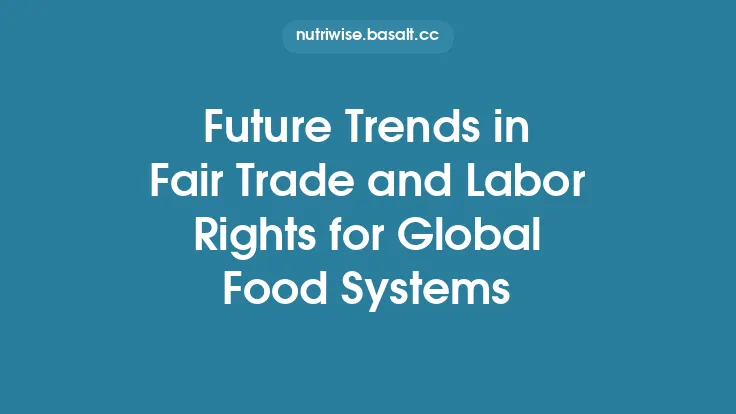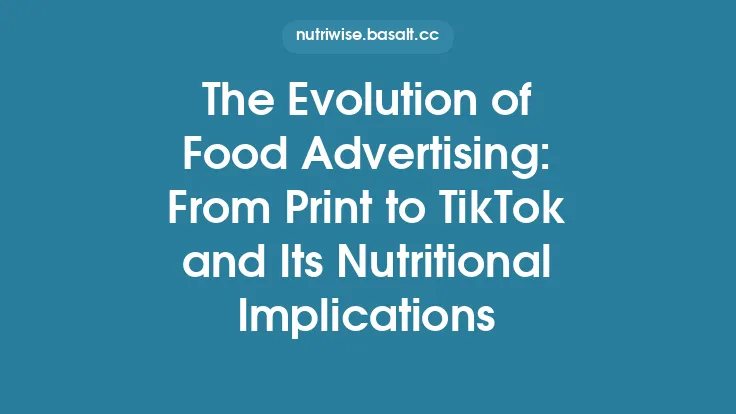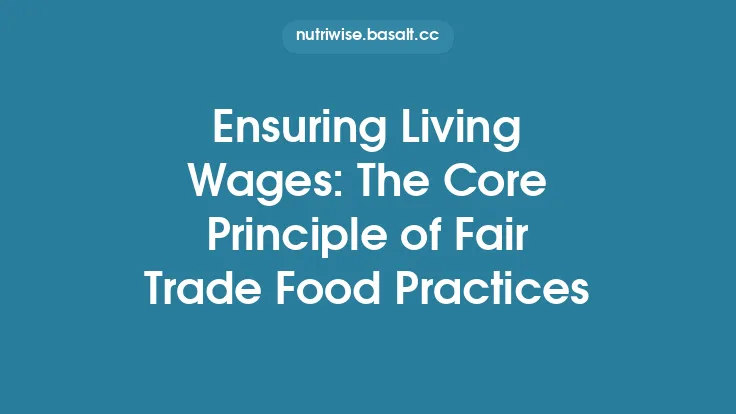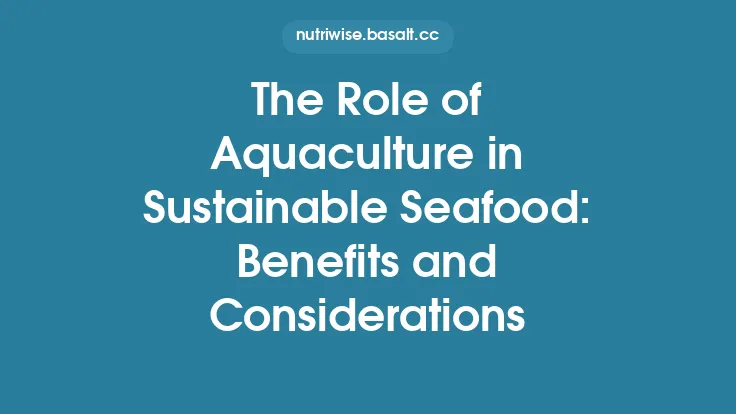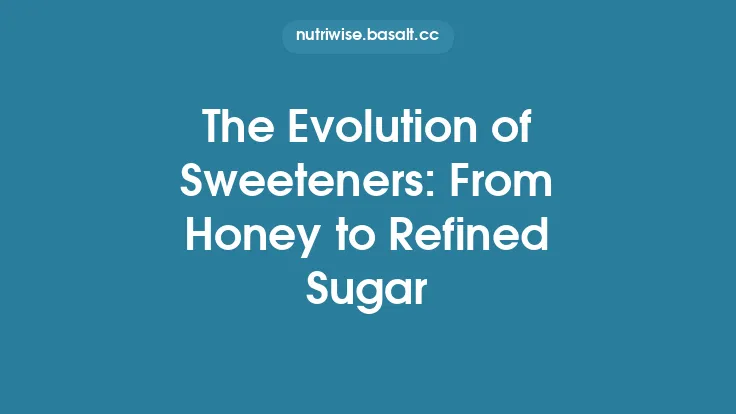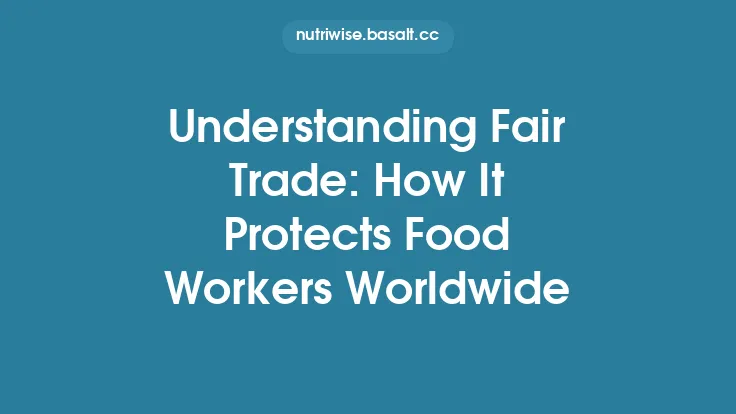The concept of fair trade in food began as a modest, activist‑driven response to the stark inequities that plagued agricultural markets in the mid‑20th century. Small groups of consumers, religious organizations, and development NGOs in Europe and North America started importing coffee, tea, and cocoa from smallholder farms under informal “solidarity” agreements. These early arrangements were based on personal relationships and direct trade, with the primary goal of ensuring that producers received a price above the volatile market rate. Over time, the need for a more systematic, scalable approach gave rise to the first formal fair‑trade certifications, setting the stage for a complex ecosystem of standards that now underpins a significant portion of the global food supply chain.
Early Roots: From Moral Appeals to Organized Campaigns (1940s‑1970s)
- Post‑war humanitarianism – In the aftermath of World War II, European relief agencies began distributing surplus food to developing regions. The experience highlighted the limitations of charity‑based models, prompting a shift toward “trade‑based” assistance that respected producers’ agency.
- The Quaker Initiative – In 1949, the United Kingdom’s Quaker organization launched the “Aid for Trade” program, purchasing surplus British tea and selling it to West African growers at a premium. This marked one of the first documented instances of paying a “fair” price above market levels.
- The rise of consumer solidarity movements – The 1960s saw the emergence of “solidarity coffee” clubs in the United States and the United Kingdom. Members pooled resources to import coffee directly from small farms in Latin America, paying a price that covered production costs and a modest profit margin for growers.
These grassroots efforts demonstrated that a market‑based solution could address poverty without relying on aid, but they also exposed the fragility of informal arrangements: inconsistent pricing, lack of traceability, and limited scalability.
Institutionalization of Standards (1970s‑1990s)
The Birth of the First Certification Bodies
- Max Havelaar (Netherlands, 1988) – Named after the 19th‑century Dutch novel that exposed colonial exploitation, Max Havelaar was the first organization to issue a formal fair‑trade label for coffee. It introduced a set of written criteria, including minimum price guarantees, a premium for community development, and basic labor standards.
- Fairtrade Labelling Organizations International (FLO) (1997) – Recognizing the proliferation of national labels, a coalition of European NGOs formed FLO to harmonize standards and create a single, internationally recognized logo. FLO’s charter codified a “minimum price” plus a “fair‑trade premium” and established an independent auditing system.
Development of Certification Protocols
- Standard drafting – Early standards were drafted by consensus among NGOs, producer cooperatives, and academic experts. They emphasized transparency, participatory decision‑making, and a clear link between price premiums and community projects.
- Third‑party verification – To lend credibility, FLO mandated that certification audits be conducted by accredited, independent bodies. Auditors examined financial records, production practices, and compliance with labor criteria, issuing certificates that were valid for one year.
- Pilot testing – Initial certifications were limited to a handful of commodities (coffee, tea, cocoa). Pilot projects allowed the standards to be refined based on feedback from producers, traders, and auditors.
Expansion Across Commodities and Geographies (1990s‑2000s)
Diversification of Certified Products
- From coffee to a broader basket – By the early 2000s, fair‑trade certification had expanded to include bananas, sugar, rice, spices, and a growing array of processed foods. Each new commodity required a tailored set of criteria addressing its specific production cycles, market dynamics, and risk factors.
- Inclusion of processed foods – Certification bodies introduced “product‑level” standards for items such as chocolate bars and snack foods, ensuring that the fair‑trade premium was passed through the entire value chain, not just at the raw‑material stage.
Geographic Spread and Institutional Partnerships
- Emergence in the Global South – National fair‑trade bodies were established in Brazil, Kenya, India, and other producer‑rich countries, enabling local oversight and capacity building.
- Collaboration with multilateral agencies – The United Nations Development Programme (UNDP) and the International Trade Centre (ITC) began referencing fair‑trade standards in their trade‑facilitation programs, lending additional legitimacy and encouraging governmental adoption of supportive policies.
Evolution of Certification Criteria (2000s‑2010s)
Strengthening Social and Environmental Benchmarks
- Labor rights integration – While early standards focused primarily on price, later revisions incorporated explicit references to International Labour Organization (ILO) conventions, covering issues such as child labor, forced labor, and the right to collective bargaining.
- Environmental stewardship – Recognizing the interdependence of social and ecological sustainability, standards added requirements for soil conservation, pesticide management, and biodiversity protection. Certification audits began to assess compliance with these environmental metrics alongside social criteria.
Introduction of Tiered Premium Structures
- Baseline vs. additional premiums – To incentivize continuous improvement, some certification schemes introduced tiered premium systems. Producers meeting basic criteria received a standard premium, while those exceeding benchmarks (e.g., implementing organic practices or gender‑equity programs) qualified for higher premiums.
- Community‑driven allocation – The decision‑making process for premium allocation shifted from a top‑down model to a participatory one, where producer groups voted on projects such as school construction, water infrastructure, or micro‑enterprise support.
Technological Enhancements in Auditing
- Digital data collection – Auditors adopted mobile data‑capture tools, enabling real‑time verification of records and reducing paperwork errors.
- Remote monitoring – Satellite imagery and GIS mapping were piloted to verify land‑use claims, especially for commodities with large, dispersed farms.
- Blockchain pilots – Although still experimental during this period, a few certification bodies explored blockchain to create immutable records of transaction flows, aiming to bolster traceability without compromising farmer privacy.
Consolidation and Governance Reforms (2010s‑2020s)
Mergers and Standard Harmonization
- FLO and Fairtrade International – In 2011, FLO rebranded as Fairtrade International, consolidating its governance structure and streamlining certification processes across regions.
- Alignment with other schemes – To reduce duplication, fair‑trade standards began aligning with complementary certifications such as Rainforest Alliance, UTZ, and the GlobalG.A.P. framework. Mutual recognition agreements allowed producers to meet multiple standards through a single audit, lowering certification costs.
Enhanced Stakeholder Representation
- Producer councils – Governance reforms granted producer organizations a formal seat on standard‑setting committees, ensuring that revisions reflected on‑the‑ground realities.
- Independent oversight boards – To address concerns about conflicts of interest, independent boards were established to oversee auditor accreditation and complaint resolution.
Focus on Systemic Impact Measurement
- Baseline data collection – Certification bodies instituted longitudinal studies to track socioeconomic indicators (e.g., household income, school enrollment) and environmental outcomes (e.g., carbon sequestration, water quality) over multiple years.
- Impact dashboards – Aggregated data were made publicly available through online dashboards, allowing researchers and policymakers to assess the aggregate effect of fair‑trade certification across regions and commodities.
Contemporary Challenges and Adaptive Strategies
- Market saturation – As fair‑trade products entered mainstream retail, the distinctiveness of the label diminished, prompting certification bodies to emphasize rigorous compliance and continuous improvement.
- Cost of certification – Smallholder producers often face high upfront costs for audits and compliance upgrades. To mitigate this, many schemes introduced subsidized audit programs and capacity‑building grants.
- Critiques of price‑focused models – Critics argue that price premiums alone cannot address structural inequities. In response, standards have broadened to include criteria on governance, gender equity, and climate resilience.
- Regulatory integration – Some national governments have begun incorporating fair‑trade criteria into public procurement policies, effectively using the certification as a tool for social procurement.
The Present Landscape of Fair‑Trade Certification in Food
Today, fair‑trade certification operates as a multi‑layered system that blends price mechanisms, social safeguards, and environmental stewardship. The evolution from informal solidarity purchases to a sophisticated, globally recognized certification regime reflects decades of learning, negotiation, and adaptation. While the core principle—ensuring that producers receive a fair share of the value they create—remains unchanged, the mechanisms that enforce this principle have become increasingly nuanced, data‑driven, and inclusive of a broader set of sustainability metrics.
The historical trajectory of fair‑trade certifications illustrates how a movement rooted in moral conviction can mature into an institutional framework capable of influencing global food markets. By tracing the milestones—from early activist clubs, through the establishment of the first standards, to the integration of advanced monitoring technologies—one can appreciate the depth and complexity of the system that now supports millions of food producers worldwide.
